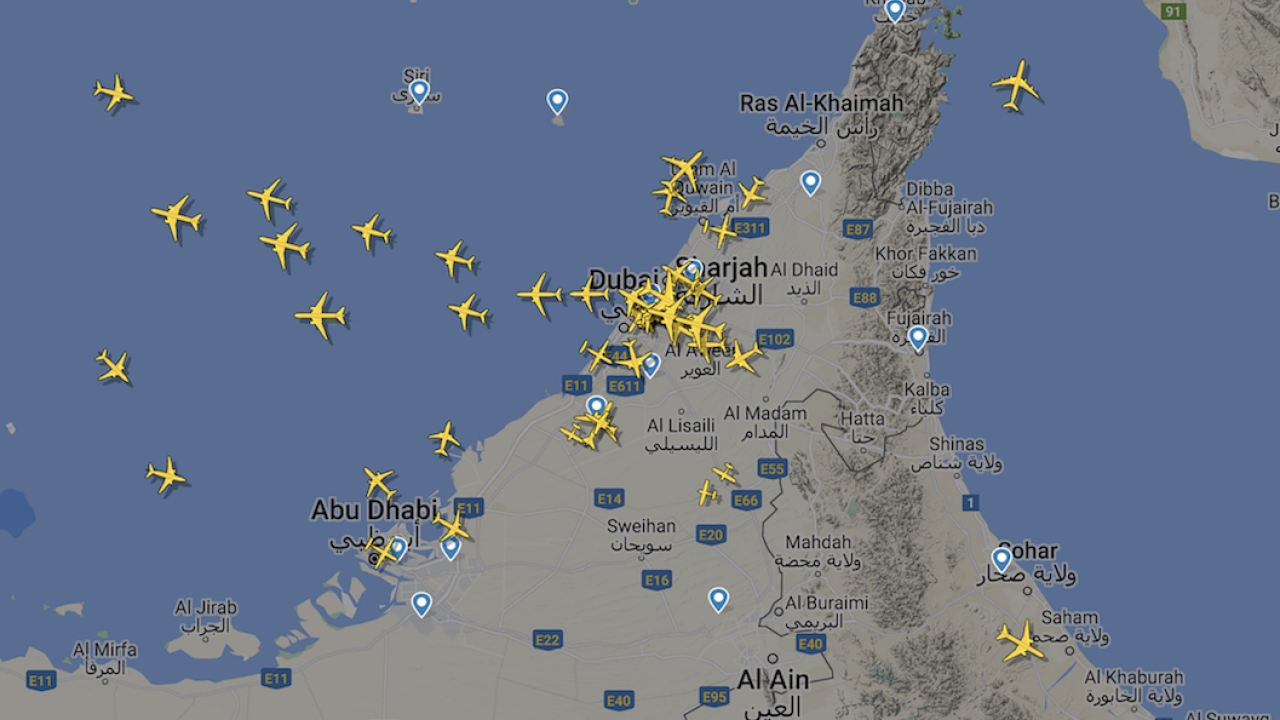Dans launches new approach to cut delays, reduce C02 and boost arrivals at DXB

The Approach Peak Offload (APO) procedure – announced today by Sheikh Ahmed bin Saeed Al Maktoum, the head of the Dubai civil aviation authority and its air navigation services as well as Emirates and Dubai Airports – will also reduce CO2 emissions by up to 447 tons on a monthly basis and increase arrival traffic by an additional 1.6 aircraft.per hour
Mohammed A. Ahli, the director general of DCAA and CEO of Dubai Air Navigation Services (Dans) said: “We are committed to and continuously striving to transform the sky through developing and launching several key air traffic movements capacity enhancement projects in Dubai
“Developing and implementing innovative procedures such as APO have enabled us to deliver enhanced air traffic management services and accommodate the rising demand of our prestigious clientele with up to 86% during peak hours. We have significantly invested our resources in thoroughly assessing the procedure from the 1 March and until its implementation in live operations through fast time and real time simulation exercises, this in turn has reinforced our efforts in building the safety case of the procedure which has been approved for implementation by the General Civil Aviation Authority (GCAA)”.
Exclusively designed and developed by the experienced operations team in Dans, the APO procedure was created for the Dubai operational environment reflecting the most advanced solutions in the aviation community . The procedure is one of several solutions implemented by Dans to drive further efficiency in the Aviation sector, as it increases the volume of air traffic movements, while reducing possible delay timings for airlines. Since its recent implementation, the APO procedure has reduced peak arrival delay for Dubai arrivals which resonates in the effective reduction of fuel consumption and cost savings for the airlines.
This has also enabled Dans to play a key role in enhancing the overall traffic flow efficiency while concurrently playing an active role in conserving the environment, as the implementation of this procedure enabled reduction of CO2 emissions by up to 447 tons on monthly basis.
The APO procedure is a concept that is based on the possible re-allocation of lighter wake producing category aircrafts to Runway 30R during arrivals peak periods, thus accommodating the arrival flow more efficiently with the concurrent use of both runways at Dubai International Airport. One of the key components of this unique procedure permits lighter category aircraft to maintain a horizontal separation of 4.5NM behind the A380 Super aircraft while landing. Experts at Dans reached the new wake separation minima levels between aircraft based on the results of the safety case which included an in depth quantitative and qualitative wake data analysis.
Saj Ahmad, Chief Analyst at StrategicAero Research commented: “We’re seeing the fruits of that runway work come to the fore. Not only as we seeing better and speedier utilisation of DXB’s runway use – its benefitting airlines who can now better schedule flights to leave/arrive closer to their published times, despite the fact that the airport is handling more passengers and flights than ever before – especially when you consider DXB is on track again for yet another record breaking year for passenger traffic.
“Basically the wake vortices (wake turbulence) created by the growing use of A380 fleets, particularly Emirates, arriving at DXB means that smaller airplanes usually have to fly much farther behind. With APO, the horizontal separation to 4.5nm coupled with smaller jets than the A380 using runway 30R, it means other non-A380 airplanes can land faster and with possibly reduced separation, since they do not create wake vortices behind them to the magnitude that the A380 does. This allows for faster runway clearance and taxi to the terminal, thereby allowing flights to land quicker in the queue behind.
“The A380 use specifically by incumbent Emirates, will not be adversely impacted. If anything, the use of 30R for landings by non-A380 jets will allow the steady stream of A380s to come in at a consistent rate, thereby preventing backups in the sky when usually we’d see smaller airplanes queuing further behind awaiting their turn for landing.
“This is what has led to the 40% reduction in peak time delays and all of this has happened without the growth of commercial airspace too. As we know, almost 60% or more of the UAE airspace is dedicated for military use – so if runway and flight changes like this bring about a better degree of fluid and functional efficiency, imagine just how more efficient the system would be if the military airspace was diluted more in favour of commercial flights.
“Looking farther out, when DWC becomes the main city airport, these airspace allocation, runway use and airplane separation minima has to be matched with a sizeable growth in commercial airspace allowance too – otherwise Dubai runs the risk of simply shifting congestion from one airport to the other.
Stay up to date
Subscribe to the free Times Aerospace newsletter and receive the latest content every week. We'll never share your email address.

